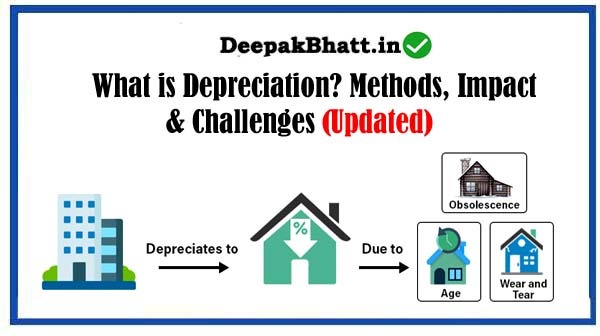what is a liability: A liability is something a person or company owes, typically a sum of money.
- 1 what is a liability?
- 1.1 1. Balance Sheet Placement:
- 1.2 2. Contrast with Assets:
- 1.3 what is a liability?
- 1.4 1. Liability Definition:
- 1.5 2. Accounting Perspective:
- 1.6 How Liabilities Work:
- 1.7 1. General Concept:
- 1.8 2. Temporal Classification:
- 1.9 3. Examples of Liabilities:
- 1.10 4. Importance of Liabilities:
- 1.11 5. Legal Liability:
- 1.12 Other Definitions of Liability:
- 1.13 1. Tax Liability:
- 1.14 2. Contingent Liability:
- 1.15 Types of Liabilities:
- 1.16 1. Current (Near-Term) Liabilities:
- 1.17 2. Non-Current (Long-Term) Liabilities:
- 1.18 Liabilities vs. Assets:
- 1.19 1. Equation:
- 1.20 Liabilities vs. Expenses:
- 1.21 2. Differentiation:
- 1.22 Example of Liabilities:
- 1.23 AT&T 2020 Balance Sheet:
- 1.24 How Do I Know If Something Is a Liability?
- 1.25 Definition:
- 1.26 How Are Current Liabilities Different From Long-Term (Noncurrent) Ones?
- 1.27 Time Horizon:
- 1.28 How Do Liabilities Relate to Assets and Equity?
- 1.29 Accounting Equation:
- 1.30 What Is a Contingent Liability?
- 1.31 Definition:
- 1.32 What Are Examples of Liabilities for Individuals or Households?
- 1.33 Household Liabilities:
- 1.34 1. Why are liabilities important?
- 1.35 2. What do liabilities tell you?
- 1.36 3. What comes in liabilities?
- 1.37 4. What is a liability in short answer?
- 1.38 5. What do liabilities do?
- 1.39 6. Are liabilities debit or credit?
- 1.40 7. What are the main classes of liabilities?
- 1.41 8. what is a liability and its example?
- 1.42 9. What are the classification of liabilities?
- 1.43 10. Is liability a real account?
- 1.44 11. Where do liabilities belong?
- 1.45 12. Are all liabilities debt?
- 1.46 13. What are 2 types of liabilities?
- 1.47 14. What is the difference between debt and liabilities?
- 1.48 15. Why are liabilities classified?
- 1.49 16. what is a liability in banking?
- 1.50 17. How many types of liabilities are there?
- 1.51 18. What are liabilities in one sentence?
- 1.52 19. Why are liabilities credited?
- 1.53 20. Why are liabilities shown first?
- 1.54 21. Why are liabilities, not expenses?
what is a liability?
Liabilities are obligations that are settled over time through the transfer of economic benefits, including money, goods, or services.
1. Balance Sheet Placement:
Liabilities are recorded on the right side of the balance sheet. They encompass a variety of obligations such as loans, accounts payable, mortgages, deferred revenues, bonds, warranties, and accrued expenses.
2. Contrast with Assets:
Liabilities are distinct from assets, which represent what is owned or owed to a person or entity.
what is a liability?
1. Liability Definition:
- Generally, a liability is something owed to somebody else.
- In accounting, it can also refer to a legal or regulatory risk or obligation.
2. Accounting Perspective:
In accounting, liabilities are booked against assets.
How Liabilities Work:
1. General Concept:
- A liability is an obligation yet to be completed or paid for between two parties.
- In accounting, financial liabilities are defined by previous business transactions, events, sales, or exchanges.
2. Temporal Classification:
- Current liabilities are short-term and expected to conclude in 12 months or less.
- Non-current liabilities are long-term, extending beyond 12 months.
3. Examples of Liabilities:
- Common liabilities include accounts payable, bonds payable, and warranties.
- Liabilities may arise from future services owed, such as borrowing or unsettled obligations from past transactions.
4. Importance of Liabilities:
- Essential for financing operations and facilitating transactions between businesses.
- Example: A supplier selling goods to a restaurant invoices for payment later, creating a liability for the restaurant.
5. Legal Liability:
- Liability may also denote the legal responsibility of a business or individual.
- Businesses often obtain liability insurance to mitigate risks associated with potential lawsuits.
Other Definitions of Liability:
1. Tax Liability:
Refers to property taxes owed to the government or income tax obligations.
2. Contingent Liability:
An obligation that might have to be paid in the future, contingent upon unresolved matters.
Types of Liabilities:
1. Current (Near-Term) Liabilities:
- Debts payable within one year, like payroll expenses, accounts payable, and dividends payable.
- Also includes unearned revenues, representing a company’s obligation to deliver goods or services paid in advance.
2. Non-Current (Long-Term) Liabilities:
- Debts payable over more than one year, such as long-term debt, rent, deferred taxes, and pension obligations.
- May involve estimates like warranty liability and contingent liability evaluation.
Liabilities vs. Assets:
1. Equation:
- Assets = Liabilities + Equity
- The difference represents the owner’s or stockholders’ equity.
Liabilities vs. Expenses:
2. Differentiation:
- Expenses are related to revenue and are listed on the income statement.
- Liabilities are obligations listed on the balance sheet.
Example of Liabilities:
AT&T 2020 Balance Sheet:
- Current liabilities include bank debt maturing in less than a year.
- Examples like accounts payable (AP) represent ongoing short-term debt obligations.
How Do I Know If Something Is a Liability?
Definition:
- Anything borrowed, owed, or obligated to someone else is a liability.
- Can be real (e.g., bills) or potential (e.g., a possible lawsuit).
How Are Current Liabilities Different From Long-Term (Noncurrent) Ones?
Time Horizon:
- Current liabilities are due within a year; often paid using current assets.
- Non-current liabilities due in more than one year, including debt repayments and deferred payments.
How Do Liabilities Relate to Assets and Equity?
Accounting Equation:
- Assets = Liabilities + Equity
- The value of liabilities equals the difference between total assets and shareholders’ equity.
What Is a Contingent Liability?
Definition:
An obligation that might be paid in the future, dependent on unresolved matters like lawsuits or unused gift cards.
You May Also Like:
Master the Basics of Finance for professionals
Business Finance Essentials Fundamental
Financial Ratios Practical guide For finance
What Are Examples of Liabilities for Individuals or Households?
Household Liabilities:
Include taxes, bills, rent or mortgage payments, loan interest and principal, and prepaid work or services.
These FAQs provide a comprehensive understanding of liabilities, covering definitions, classifications, examples, and their relationship to assets and equity.
1. Why are liabilities important?
Liabilities are crucial because they represent obligations or debts that an individual or a company owes. Understanding liabilities is essential for assessing financial health, determining solvency, and making informed decisions about borrowing, investing, or managing cash flow.
2. What do liabilities tell you?
Liabilities provide insight into the financial obligations of an individual, company, or entity. They reveal the amount of money owed, the nature of obligations, and the short-term and long-term financial responsibilities. Analyzing liabilities is key to assessing financial stability and risk.
3. What comes in liabilities?
Liabilities encompass various financial obligations, including loans, accounts payable, mortgages, deferred revenues, bonds, warranties, and accrued expenses. Both current and non-current liabilities are listed on the balance sheet, reflecting short-term and long-term obligations.
4. What is a liability in short answer?
In short answer, a liability is something that a person, company, or entity owes or is obligated to pay. It represents financial obligations and is recorded on the right side of the balance sheet.
5. What do liabilities do?
Liabilities serve as indicators of financial responsibilities. They reflect borrowed funds, amounts owed to creditors, and obligations to fulfill promises or contracts. Monitoring liabilities helps assess financial health, manage debt, and make informed decisions about financial strategies.
6. Are liabilities debit or credit?
In accounting, liabilities have credit balances. When a liability increases, it is credited, and when it decreases, it is debited. This is by the fundamental accounting equation, where assets equal liabilities plus equity.
7. What are the main classes of liabilities?
The main classes of liabilities include current liabilities and non-current (or long-term) liabilities. Current liabilities are short-term obligations due within a year, while non-current liabilities extend beyond a year and encompass long-term debt, deferred taxes, and other obligations.
8. what is a liability and its example?
Liabilities are financial obligations or debts owed by an individual or company. Examples of liabilities include accounts payable, loans, mortgages, bonds, accrued expenses, and deferred revenues.
9. What are the classification of liabilities?
Liabilities are classified into two main categories:
- Current Liabilities: Short-term obligations due within one year.
- Non-current (or Long-term) Liabilities: Obligations extending beyond one year, such as long-term debt, deferred taxes, and pension obligations.
10. Is liability a real account?
No, liabilities are not real accounts. In accounting, they fall under the category of personal accounts. Real accounts represent tangible assets, whereas liabilities are obligations, making them part of personal accounts.
11. Where do liabilities belong?
In accounting, liabilities belong to the right side of the balance sheet, opposite assets. They are essential components in the balance sheet equation (Assets = Liabilities + Equity), reflecting the financial position of an individual or company.
12. Are all liabilities debt?
While debt is a type of liability, not all liabilities are debt. Liabilities encompass a broader range of financial obligations, including accounts payable, accrued expenses, and deferred revenues. Debt specifically refers to borrowed money, such as loans or bonds.
13. What are 2 types of liabilities?
The two main types of liabilities are:
- Current Liabilities: Short-term obligations due within one year.
- Non-current (Long-term) Liabilities: Obligations extending beyond one year, such as long-term debt, deferred taxes, and pension obligations.
14. What is the difference between debt and liabilities?
Debt is a subset of liabilities. While all debts are liabilities, not all liabilities are debts. Liabilities encompass various financial obligations, including accounts payable and accrued expenses, whereas debt specifically refers to borrowed funds, such as loans or bonds.
15. Why are liabilities classified?
Classifying liabilities is essential for financial reporting and analysis. It provides a clear distinction between short-term and long-term obligations, helping stakeholders understand the timing of payments and assess the financial health and liquidity of an individual or company.
16. what is a liability in banking?
In banking, liabilities refer to financial obligations that a bank owes to its customers and other creditors. This includes deposits from customers, certificates of deposit, and other borrowings. Liabilities in banking are balanced by assets, which represent the loans and investments made by the bank.
17. How many types of liabilities are there?
There are two main types of liabilities:
- Current Liabilities: Short-term obligations due within one year.
- Non-current (Long-term) Liabilities: Obligations extending beyond one year, such as long-term debt, deferred taxes, and pension obligations.
18. What are liabilities in one sentence?
Liabilities represent financial obligations or debts that an individual, company, or entity owes, encompassing short-term and long-term obligations listed on the balance sheet.
19. Why are liabilities credited?
Liabilities have credit balances in accounting because an increase in liabilities is recorded as a credit entry. This is consistent with the accounting equation, where assets equal liabilities plus equity. A credit entry reflects an increase in the right side of the equation, maintaining the balance.
20. Why are liabilities shown first?
In financial reporting, liabilities are often shown first on the balance sheet to emphasize the financial obligations and debts of an individual or company. This presentation helps stakeholders quickly understand the extent of financial responsibilities before moving on to assets and equity.
21. Why are liabilities, not expenses?
Liabilities are not expenses; they are obligations or debts that may or may not result in future expenses. Expenses are costs incurred in the process of generating revenue and are recorded on the income statement. Liabilities, on the other hand, represent financial obligations recorded on the balance sheet.

















